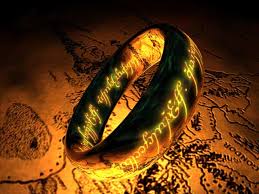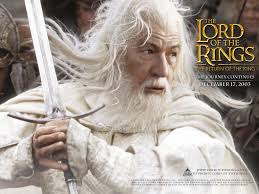The title of the book refers to the story's main antagonist, the Dark Lord Sauron, who had in an earlier age created the One Ring to rule the other Rings of Power, as the ultimate weapon in his campaign to conquer and rule all of Middle-earth. From quiet beginnings in the Shire, a hobbit land not unlike the English countryside, the story ranges across Middle-earth following the course of the War of the Ring through the eyes of its characters, most notably the hobbits, Frodo Baggins, Samwise Gamgee, Meriadoc Brandybuck and Peregrin Took.
Along with some of Tolkien's other works, The Lord of the Rings has been subjected to extensive analysis of its themes and origins. Although a major work in itself, the story was only the last movement of a larger work Tolkien had worked on since 1917, in a process he described as mythopoeia. Influences on this earlier work, and on the story of The Lord of the Rings, include philology, mythology, religion and the author's distaste for the effects of industrialization, as well as earlier fantasy works and Tolkien's experiences in World War I. The Lord of the Rings in its turn is considered to have had a great effect on modern fantasy; the impact of Tolkien's works is such that the use of the words "Tolkienian" and "Tolkienesque" has been recorded in the Oxford English Dictionary.
The enduring popularity of The Lord of the Rings has led to numerous references in popular culture, the founding of many societies by fans of Tolkien's works, and the publication of many books about Tolkien and his works. The Lord of the Rings has inspired, and continues to inspire, artwork, music, films and television, video games, and subsequent literature. Award-winning adaptations of The Lord of the Rings have been made for radio, theatre, and film.
Download link :
The Lord of the Rings: The Fellowship of the Ring

Part 1 | Part 2 | Part 3 | Part 4
Part 5 | Part 6 | Part 7
Gunakan Winrar Pro untuk join sume video ini
The Lord of the Rings: The Two Towers
 Part 1 | Part 2 | Part 3 | Part 4 | Part 5
Part 1 | Part 2 | Part 3 | Part 4 | Part 5Part 6 | Part 7 | Part 8 | Part 9
Password
Gunakan Hjsplit Pro untuk join sume video ini
The Lord of the Rings: The Return of the King
Part 1
 | Part 2 | Part 3 | Part 4 | Part 5
| Part 2 | Part 3 | Part 4 | Part 5Part 6 | Part 7 | Part 8 | Part 9
Password
Gunakan Hjsplit Pro untuk join sume video ini




No comments:
Post a Comment